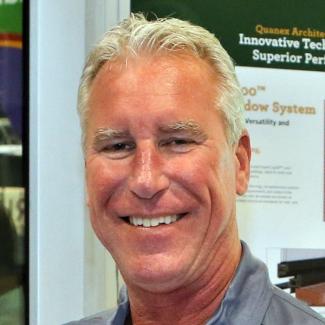Embracing Continuous Improvement with the Right Technology
Who says sharpening your competitive edge through automation is beyond your reach?
You may have noticed a growing trend in this magazine’s news section: More and more reports of plant openings and expansions by major fenestration OEMs. It’s not too surprising. The hefty backlog many insulating glass fabricators face along with 2022 demand projections are without construction industry precedent. If there was ever a time to double-down on extra automation and production muscle, it’s now.
News-making expansion plans are expected from the big players. But what about smaller and mid-size operators? They face the same surging demand, backlogs, labor issues and supply challenges as any national competitor. Falling behind and losing business to competitors isn’t much of an option.
The fact of the matter is that some form of automation can be beneficial for anyone making windows and doors. And no matter your operation’s size, there’s likely a solution that can work for your shop floor. Let’s explore some of the options.
What Works Can Always Work Better
Manual line processes like glass washing, edge deletion, vinyl profile corner cleaning or end-of-line unit handling all present some good opportunity for automation. Robotic equipment can be precisely calibrated to handle these tasks with greater ease and consistency, all while reducing the likelihood of human error. And importantly, you don’t have to implement these kinds of automation all at once.
Start by thinking critically about your production line. Ask yourself:
- Where can we operate even more efficiently?
- Where do we need to accelerate workflow?
- Where are the bottlenecks?
- How can we compress cycle time and differentiate ourselves through production value, quality and availability?
Target Immediate Impact
Hall of Fame baseball player William “Wee Willie” Keeler had a motto when it came to batting: “Hit ‘em where they ain’t.” I think there’s some inspiration window and door makers can take from the phrase—deploy automated solutions where they’ll have the most impact. If you see a production line deficiency, go after it aggressively. It’s this spirit of continuous improvement that should inform all factory floor decision-making.
Automation can deliver more than favorable performance metrics. A tactical, step-by-step approach to factory transformation can yield big-time staffing benefits, too. I’ve seen it for myself in our Kent, Washington, plant. In late 2019 we opened 10 new extrusion lines there, and the new fabrication center embraces the latest touchscreen and sensor technology. The cool part? Many of our younger staff love the digital makeover. We expected to see jumps in vinyl extrusion quality and throughput. Improved worker recruitment and retention is a welcome by-product.
Safeguard Your Future
That people dimension can’t be overstated. At a time when reports of window delivery lead times of three, even four months are common, every skilled fenestration professional counts. A plant floor investment in staff safety, comfort and upgraded digital skills can improve team morale. It also appeals to younger generations that are your workforce’s future.
It’s an exciting time, and one we have to approach with the right strategies. Today’s hyper-active marketplace can be a harsh environment for fenestration companies reliant on old school methods. Even measured, incremental steps to greater factory floor automation will yield a variety of expected and unexpected benefits. As you set your 2022-2023 priorities, consider working with suppliers that can help serve your best interests with the counsel, resources and support you need to craft a practical step-by-step plant transformation gameplan.
I’d love to hear your thoughts on where you’re considering automation solutions. Drop me a line at Eric.Thompson@Quanex.com.



